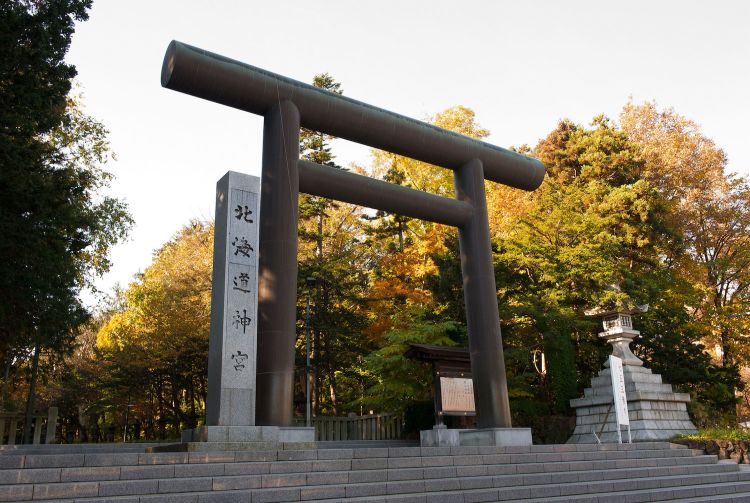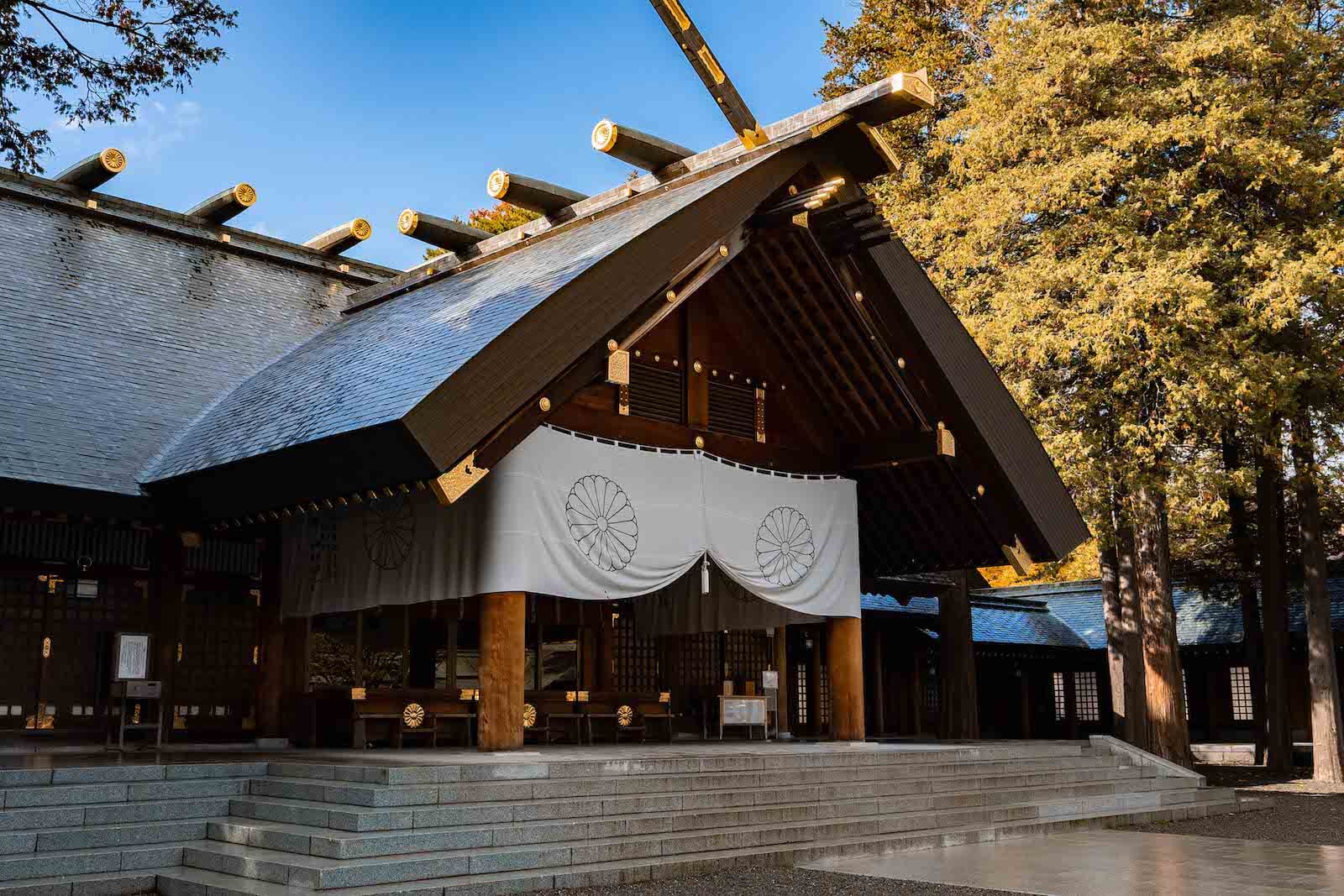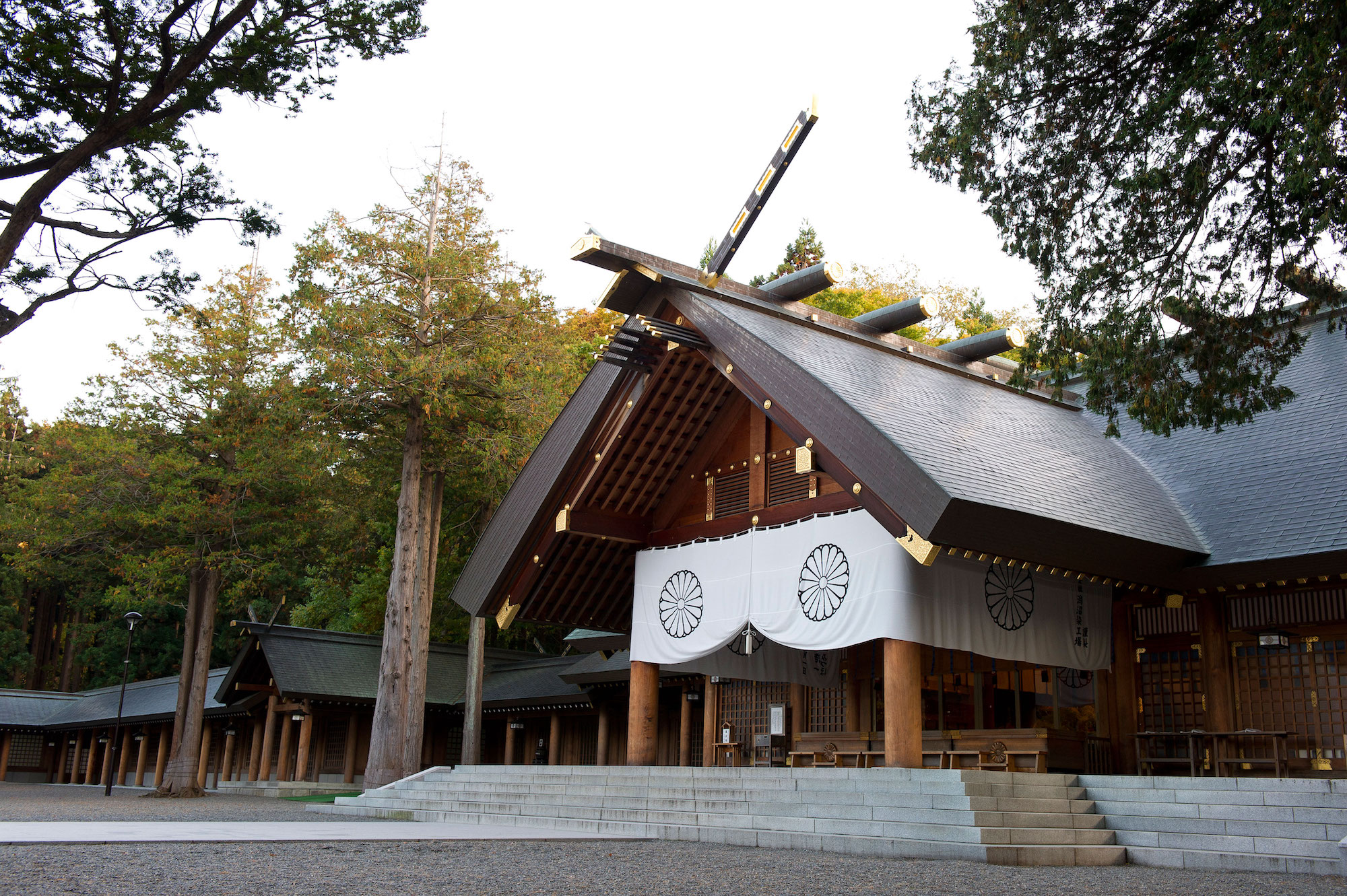Win a Free Trip to Japan!
Experience cherry blossoms and ancient temples
Nestled in the heart of Hokkaido, the Hokkaido Shrine stands as a testament to Japan’s rich cultural heritage and spiritual traditions. As visitors explore its serene grounds, they encounter not only the stunning architecture but also the historical significance that resonates throughout the region. Surrounded by lush nature, this sacred space invites moments of reflection and connection. Whether you’re attending vibrant festivals or simply soaking in the tranquility, the Hokkaido Shrine offers a unique experience that deeply engages both the mind and the spirit.
Historical Significance of Hokkaido Shrine
The Hokkaido Shrine holds immense historical significance as a spiritual cornerstone for the region. Established in 1869, this shrine was dedicated to the deities of northern Japan, particularly focusing on the spirits of those who contributed to Hokkaido’s development.
Key Historical Points
- Foundation: Built shortly after the Meiji Era began, the shrine symbolizes Japan’s ambitions to develop Hokkaido as a thriving region.
- Cultural Integration: It represents the fusion of indigenous Ainu beliefs with the Shinto practices brought by Japanese settlers. This blend of cultures adds depth to its historical narrative.
- Preservation of Traditions: The shrine has served as a hub for various cultural practices, promoting local traditions and festivals while preserving the history of the Ainu and Japanese communities.
Impact on the Community
- Pilgrimage Site: Locals and visitors alike view the Hokkaido Shrine as a sacred pilgrimage site, fostering a sense of identity and continuity.
- Historical Events: The shrine has been the backdrop for numerous significant events, including traditional ceremonies, community gatherings, and national celebrations.
In summary, the Hokkaido Shrine is not only a religious site but also a historical monument that reflects the rich tapestry of local culture and heritage, linking past and present for both residents and visitors.
Architecture and Design Features
The Hokkaido Shrine boasts a unique architectural style that beautifully merges traditional Shinto architecture with the serene backdrop of Hokkaido’s landscapes. This shrine, established in 1869, features several design elements that distinguish it from other shrines in Japan.
Key Architectural Elements:
- Torii Gate: The iconic Torii gate at the entrance serves as a threshold, marking the transition into a sacred space. Its striking design often leads visitors to pause and reflect before entering.
- Main Shrine Building (Honden): The Honden exhibits the shinmei-zukuri style, known for its simplicity and elegance. This design emphasizes natural materials, primarily wood, and showcases intricate craftsmanship.
- Shinto Altar: Inside, the altar is dedicated to the spirits of Hokkaido’s indigenous Ainu people, illustrating the shrine’s deep cultural ties.
Notable Features:
- Natural Aesthetics: The use of wooden beams and thatched roofs harmonizes with the surrounding forest, reinforcing the connection between spirituality and nature.
- Landscaped Gardens: Meticulously arranged gardens enhance the tranquil atmosphere, inviting visitors to explore and appreciate the natural beauty of the region.
In summary, the Hokkaido Shrine stands as a testament to both historical value and architectural excellence, attracting admirers not only for its spiritual significance but also for its stunning design features.
Natural Surroundings and Sacred Spaces
The Hokkaido Shrine is not only a testament to architectural beauty but also nestled amidst an array of natural wonders that enhance its spiritual aura. Located within Maruyama Park, this shrine is surrounded by lush forests, tranquil ponds, and vibrant wildlife, making it a peaceful retreat for both visitors and locals.
Key Natural Features:
- Lush Woodlands: Towering trees dominate the landscape, creating a serene atmosphere conducive to reflection and meditation. The forest is home to various bird species, enriching the auditory landscape with soothing sounds.
- Sacred Spaces: The shrine grounds include several sacred spaces, each meticulously maintained to honor cultural traditions. These areas often serve as sites for prayer, meditation, and spiritual rituals.
-
Seasonal Flora: Each season brings a unique floral display:
- Spring: Cherry blossoms bloom, attracting visitors seeking a picturesque view.
- Summer: Vibrant greenery enhances the tranquil mood, perfect for leisurely strolls.
- Autumn: Leaves turn to shades of gold and crimson, providing a stunning backdrop for photos.
- Winter: The serene landscape blanketed in snow creates a magical atmosphere.
In summary, the Hokkaido Shrine harmonizes with its natural surroundings, offering not just a sacred space for worship but also a beautiful environment for visitors to connect with nature and unwind.
Cultural Practices and Festivals
The Hokkaido Shrine serves as a vibrant center for cultural practices and festivals that reflect the rich heritage of Japan’s northernmost island. Each year, various events take place, attracting both locals and visitors who seek to immerse themselves in these traditions. Here are some notable aspects of the Hokkaido Shrine celebrations:
- Sapporo Summer Festival: This lively event occurs annually during July and August. It features traditional dances, food stalls, and performances that celebrate Hokkaido’s culture.
- Hokkaido Shrine Festival: Celebrated in early June, this festival includes a grand procession of beautifully adorned floats, traditional music, and performances. Locals dress in elegant kimonos, showcasing age-old customs.
- New Year Celebrations: Thousands flock to the Hokkaido Shrine to make first prayers of the year. The atmosphere is infused with excitement as people participate in rituals like omikuji (fortune-telling) and enjoying traditional snacks.
- Seasonal Obon Festival: Held in mid-August, this festival honors ancestral spirits with lanterns and dance. Visitors can experience the unique blend of spirituality and community spirit.
These events not only highlight the Hokkaido Shrine’s role in maintaining cultural identity but also encourage community bonding. By participating in these festivals, guests get a unique glimpse into the soulful practices that enrich Hokkaido’s culture, making each visit unforgettable.

Visitor Experience and Accessibility
Visiting the Hokkaido Shrine is a remarkable experience, allowing guests to immerse themselves in both nature and culture. The shrine, nestled within the tranquility of Maruyama Park, offers a peaceful retreat from the city’s hustle and bustle. Here’s what you need to know:
Accessibility
-
Location: Situated in Sapporo, the Hokkaido Shrine is easily accessible by public transportation:
- Subway: The Maruyama Koen Station (Tozai Line) is just a short walk away.
- Bus: Several local buses service the area from key locations in Sapporo.
- Walkability: The shrine features well-maintained paths, making it friendly for all visitors, including those with mobility challenges.
Visitor Experience
- Opening Hours: Open year-round, the Hokkaido Shrine welcomes visitors from dawn until dusk.
- Free Admission: Entry to the shrine is free, allowing everyone to enjoy its serene environment.
-
Cultural Engagement: Visitors can participate in traditional Shinto rituals, such as:
- Fortune-telling (omikuji)
- Offering prayers at the main hall (Honden)
Visitor Tips
- Language: While Japanese is predominant, many staff provide information in English.
- Best Time to Visit: Early mornings or weekdays often offer a quieter experience, allowing better interaction with the sacred spaces.
The Hokkaido Shrine combines accessibility with enriching cultural experiences, ensuring every visit leaves lasting memories.
Wildlife and Flora of the Region
The area surrounding Hokkaido Shrine is a rich tapestry of diverse wildlife and captivating flora, which enhances the shrine’s serene atmosphere. Here’s a closer look at what you might encounter during your visit:
Wildlife
- Birds: The region is home to various species such as Japanese tits, woodpeckers, and seasonal migratory birds, providing nature lovers ample opportunities for birdwatching.
- Mammals: You may spot wildlife like red foxes, Japanese black bears, and various small mammals, which thrive in the lush surroundings.
Flora
- Cherry Blossoms: In spring, the blooming cherry trees offer a stunning spectacle of soft pink colors, attracting many visitors.
- Evergreen Trees: The shrine’s grounds feature majestic evergreens, which provide a canopy of greenery all year round.
- Wildflowers: Depending on the season, colorful wildflowers blanket the landscape, contributing to the area’s natural beauty.
Conservation Efforts
Local initiatives focus on preserving the delicate ecosystem around the hokkaido shrine. These efforts ensure that both the wildlife and plant species thrive, maintaining the region’s natural harmony.
Ideal Seasons for Wildlife Watching
- Spring: Best for bird migrations and blooming of cherry blossoms.
- Autumn: Enjoy the vibrant fall colors and increased wildlife activity before winter.
Exploring the wildlife and flora around Hokkaido Shrine transforms your visit into a holistic experience, connecting visitors with nature’s beauty.
Photography Opportunities at the Shrine
The Hokkaido Shrine provides photographers with a plethora of stunning visuals, making it a must-visit for both amateurs and professionals alike. Here are some prime photography opportunities you don’t want to miss:
- Scenic Architecture: Capture the intricate details of the shrine’s architecture, from its traditional torii gates to the beautifully crafted main hall. The contrast of these structures against the background of lush greenery offers a perfect composition.
-
Seasonal Backdrops:
- Spring: Cherry blossoms bloom, creating a picturesque scene around the shrine.
- Summer: Lush green foliage enhances the serene ambiance.
- Autumn: Vivid fall colors envelop the area, offering striking photos against the shrine’s wooden structures.
- Winter: Snow-covered landscapes provide a magical, tranquil setting that highlights the shrine’s elegance.
- Wildlife Encounters: As you explore the natural surroundings of the Hokkaido Shrine, look for local wildlife. Capturing images of animals like deer or various bird species can add depth to your photography collection.
- Festivals and Cultural Events: Throughout the year, cultural practices and festivals take place at the shrine. These events present ample opportunities to photograph traditional attire, rituals, and community gatherings.
By planning your visit around these elements, you can bring home breathtaking photographs that reflect the Hokkaido Shrine’s serenity and cultural significance.

Seasonal Changes and Events
Visits to the Hokkaido Shrine offer a fresh perspective with each season, showcasing a unique blend of nature and cultural events. Here’s what you can expect throughout the year:
Spring (March to May)
- Cherry Blossoms: The blooming cherry trees create stunning backdrops.
- Events: The annual Hanami (flower viewing) festival draws crowds celebrating the beauty of blossoms.
Summer (June to August)
- Lush Greenery: The forested areas around the shrine come alive with vibrant greens.
- Events: Matsuri (festivals) featuring traditional music and dance take place, enhancing the cultural experience.
Autumn (September to November)
- Fall Foliage: The shrine area transforms with hues of red, orange, and yellow, offering spectacular views.
- Events: The Shinto rituals to give thanks for the harvest are held, showcasing local traditions.
Winter (December to February)
- Snow-Covered Serenity: The Hokkaido Shrine becomes a winter wonderland, with snow blanketing the trees and structures.
- Events: Sumo wrestling exhibitions and winter festivals celebrate the season’s charm.
Quick Comparison of Seasonal Highlights
| Season | Key Attraction | Notable Events |
|---|---|---|
| Spring | Cherry Blossoms | Hanami Festival |
| Summer | Vibrant Greenery | Cultural Matsuri |
| Autumn | Fall Colors | Harvest Thanksgiving Rituals |
| Winter | Snowy Landscape | Sumo and Winter Festivals |
Experiencing the Hokkaido Shrine across different seasons allows visitors to witness the interplay of nature and culture, making each visit truly special.
Spiritual Significance for Locals
The Hokkaido Shrine holds profound spiritual importance for the local community. As a revered Shinto shrine, it serves as a central point for spiritual practices and connects residents to their cultural heritage. Here are some aspects of its significance:
- Ancestral Worship: Locals often visit the shrine to honor their ancestors, reflecting a deep-rooted belief in the spirits’ continued presence and influence.
- Rituals and Offerings: Regular rituals, such as Miko performances and seasonal ceremonies, offer locals a chance to express gratitude and seek blessings, fostering community unity.
- Cultural Identity: The Hokkaido Shrine embodies the cultural identity of the Ainu people and other local communities, providing a sense of belonging and continuity.
- Life Milestones: Many residents celebrate significant life events—such as marriages and coming-of-age ceremonies—at the shrine, marking these moments with traditional rituals that bind families and generations.
Additionally, the serene environment of the Hokkaido Shrine enhances its spiritual ambiance, providing a peaceful backdrop for contemplation and prayer. Locals often describe their visits as rejuvenating, allowing a moment of reflection amidst the busyness of everyday life. This spiritual connection to the shrine reinforces the collective identity of the people, emphasizing the enduring relevance of tradition in modern society.
Tips for Planning Your Visit to Hokkaido Shrine
Visiting the Hokkaido Shrine can be a rewarding experience if you plan ahead. Here are some essential tips to ensure a smooth visit:
-
Best Time to Visit:
- Spring (April – May): Cherry blossoms bloom, creating picturesque views.
- Autumn (September – November): Enjoy vibrant fall foliage.
-
Getting There:
- Use public transport: The shrine is accessible via bus or tram from Sapporo city center.
- Consider walking if you stay nearby; it’s a serene journey through nature.
-
Cultural Etiquette:
- Dress modestly when visiting.
- Follow the basic shrine etiquette: bow before entering and toss a coin into the offering box.
-
Facilities:
- There are restrooms and a souvenir shop on-site.
- Bring your own water and snacks, as options might be limited.
-
Photography Tips:
- Visit early in the morning for fewer crowds.
- Capture the shrine’s architecture against the backdrop of towering trees.
-
Events and Festivals:
- Check the shrine’s calendar for cultural events that can enrich your visit.
-
Duration of Visit:
- Plan to spend at least 1-2 hours to fully enjoy the peaceful atmosphere and explore the grounds adequately.
By following these tips, you can make the most of your journey to the enchanting Hokkaido Shrine, immersing yourself in its tranquil environment and rich culture.
Frequently Asked Questions
What is the significance of Hokkaido Shrine in Japanese culture?
Hokkaido Shrine, founded in 1869, holds significant cultural importance as it enshrines the spirits of the early pioneers of Hokkaido. It represents the connection between the past and present, offering visitors a glimpse into Japan’s history, particularly the Meiji Restoration period. The shrine stands as a testament to the resilience and spirit of those who settled in Hokkaido, and it continues to be a site for various traditional rituals and festivals, attracting locals and tourists alike.
What are the best times to visit Hokkaido Shrine for scenic views?
The best times to visit Hokkaido Shrine for breathtaking scenic views are during the cherry blossom season in late April to early May and the autumn foliage months of October. In spring, the shrine’s cherry trees bloom magnificently, providing a picturesque setting for photographs. Conversely, the autumn months showcase a vibrant tapestry of red, orange, and yellow leaves, creating a stunning contrast against the shrine’s traditional architecture. Each season offers a unique perspective, making Hokkaido Shrine a year-round attraction.
Are there any special events or festivals held at Hokkaido Shrine?
Yes, Hokkaido Shrine hosts several special events and festivals throughout the year. One of the most notable is the Choko-sai festival, held in June, which celebrates the shrine’s founding with traditional music, dance, and processions. Additionally, the shrine also conducts New Year celebrations, where thousands flock to offer prayers for good fortune. These events provide an immersive experience into Japanese customs and attract many visitors eager to witness local traditions.
How can visitors access Hokkaido Shrine from Sapporo city center?
Accessing Hokkaido Shrine from Sapporo city center is convenient and straightforward. Visitors can take the subway to the Maruyama Koen Station on the Tozai Line, followed by a short walk of approximately 15 minutes through the picturesque Maruyama Park. Alternatively, bus services also connect the city center to the shrine, offering another accessible means of transportation. The shrine’s location amidst nature makes the journey worthwhile as you’ll be treated to serene surroundings.
What should visitors know before their trip to Hokkaido Shrine?
Before visiting Hokkaido Shrine, it is essential to respect the shrine’s customs and practices. Dress modestly and be prepared to remove shoes if entering certain areas. The shrine also has signs explaining various rituals, such as how to pray effectively at the shrine. Additionally, visiting during weekdays can provide a more tranquil experience as weekends tend to draw larger crowds. Being aware of local etiquette will enrich your visit and help you connect more deeply with the cultural practices present at the shrine.
